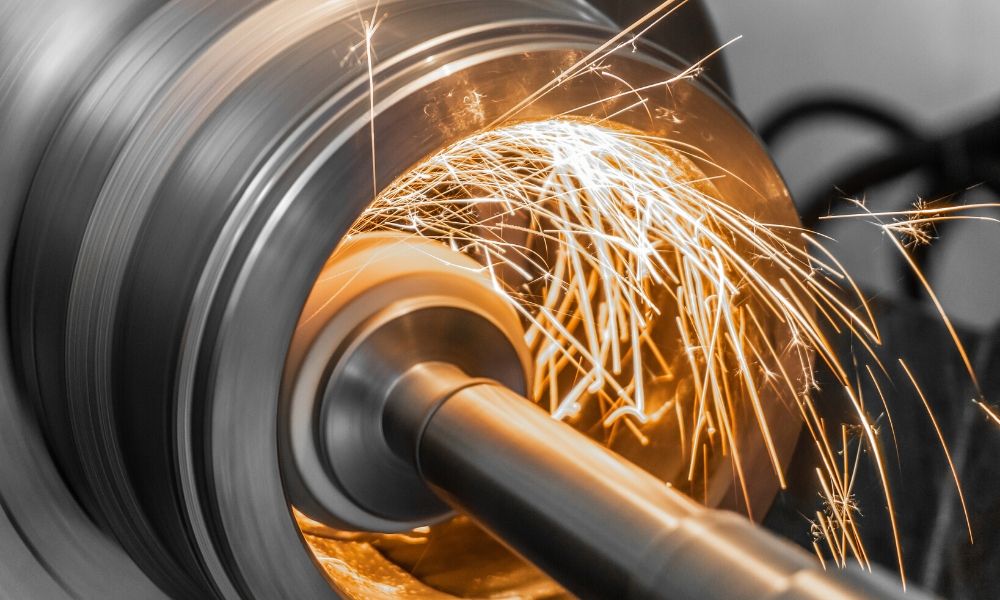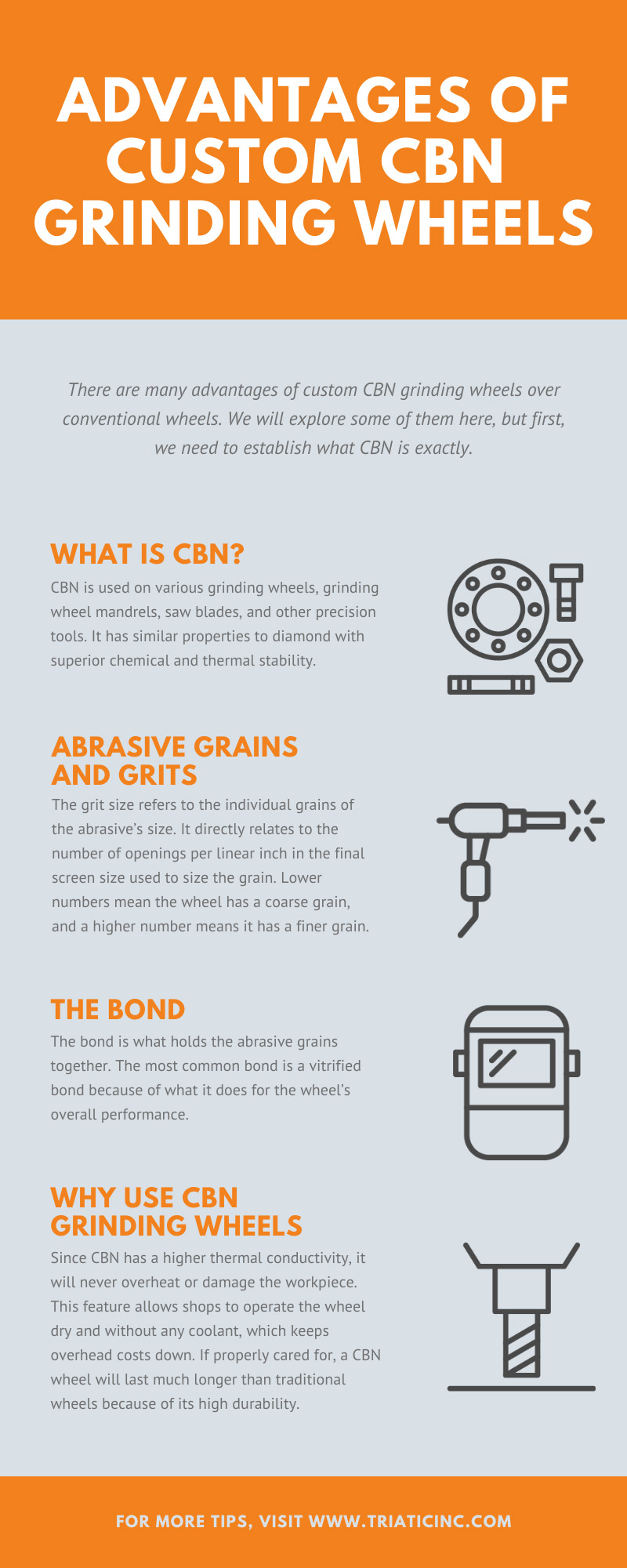Advantages of Custom CBN Grinding Wheels
24th Oct 2023

For every type of shop and every project, you need the right tool for the job. Wood shops, machine shops, and body shops need to find the right, well-maintained tools to successfully achieve their desired results. Machine shops especially need quality tools they can depend on day after day. For successful machining, you need high-quality, sharp cutting tools. Those tools will ensure speed and precision on your workpiece. Keeping those tools sharp depends three things; the tool set up, the kind of grinding wheel you have, and your grinding method.
Grinding wheels and their abrasives come in two basic forms: conventional or cubic boron nitride (CBN). Aluminum oxide is the most common abrasive used on grinding wheels, and it comes in many different types. Cubic boron nitride (CBN) is a synthetic material that has all the same properties as diamond, and industrial applications for cutting and grinding typically use this abrasive. There are many advantages of custom CBN grinding wheels over conventional wheels. We will explore some of them here, but first, we need to establish what CBN is exactly.
What is CBN?
CBN is used on various grinding wheels, grinding wheel mandrels, saw blades, and other precision tools. This super abrasive grinds and cuts extremely hard materials in applications for many different industries. Breaking it all the way down to its chemical properties, boron nitride is a chemically and thermally heat resistant compound material made by combining boron and nitrogen. It has a chemical formula of BN. In one form, BN shares many properties with graphite, and many manufacturers use it as a lubricant or as an additive. There multiple forms of BN; however, the differences between them lie in their chemical makeup and the arrangement of the boron and nitrogen atoms. The cubic version (CBN) has similar properties to diamond with superior chemical and thermal stability. In its cubic form, CBN shares the same crystalline structure as diamond, but instead of carbon atoms, it’s made up of alternately-bonded atoms of boron and nitrogen. What the means is that CBN is almost the exact same thing as diamond. It’s just as hard, just as durable, and it can perform the same tasks. In comparison to diamond, CBN boasts superior cutting and grinding abilities when used on manmade materials, and diamond is better suited for cutting natural materials such as granite and stone. That is why machine shops choose CBN over conventional wheels to sharpen tools.
Abrasive Grains and Grits
Grinding wheels and other bonded abrasive tools have two basic components. Those are the abrasive grain that actually makes cuts and the bond that holds it all together on the tool. The percentage of the bond, grain, and spacing in the wheel will determine the wheel’s structure. A shop should choose the specific abrasive for a wheel based on how it will interact with the material it will cut. Ideally, the abrasive will stay sharp for a long time with minimal point dulling. When dulling occurs, the abrasive fractures and creates new cutting points, which lessens the precision of the cut. The grit size refers to the individual grains of the abrasive’s size. It directly relates to the number of openings per linear inch in the final screen size used to size the grain. Lower numbers mean the wheel has a coarse grain, and a higher number means it has a finer grain.
The Bond
For the abrasive in the wheel to cut efficiently, the wheel must have the proper bond. The bond is what holds the abrasive grains together. The most common bond is a vitrified bond because of what it does for the wheel’s overall performance. Wheels made with vitrified bonds are strong, porous, and very rigid. They can remove material at high speeds and with precision. The bond must wear away at the same rate as the abrasive grains so that as the abrasive wears away it exposes newer, sharper ones. Each type of bond can give distinct characteristics to the grinding action of the wheel. Factors like wheel operating speed, necessary precision needs, type of grinding operation, and the material it will work on should determine the bond a shop will select.
Why Use CBN Grinding Wheels
A grinding wheel is an abrasive cutting tool. On a grinding wheel, the abrasive acts like the teeth of a saw, but it grinds away the material instead of tearing it away. Shops need to consider a few things when choosing a CBN wheel. The first thing to account for is the material you will work with. The super hardened steel most machine shops use can become damaged if you use an inferior abrasive to grind them. Traditional wheels made from aluminum oxide will overheat and wear down faster than CBN. Overheating will cause thermal damage and burns on the workpiece. Since CBN has a higher thermal conductivity, it will never overheat or damage the workpiece. This feature allows shops to operate the wheel dry and without any coolant, which keeps overhead costs down. If properly cared for, a CBN wheel will last much longer than traditional wheels because of its high durability. The strength and durability come from the bonding between the steel hub and grains. You can also strip and replate CBN wheels. When the abrasive and bond show wear, we can remove the remaining bond and replate the wheel, so it functions like new. This prevents you from having to buy new wheels all the time and reduces operating costs. Replating a wheel obviously costs less than buying a new one. The unique properties of CBN wheels mean only a small amount of pressure is necessary to sharpen tools with them. When used at the proper speed, applying a tool with a light touch will sharpen it without the need to force it down. Applying less pressure saves the machinist from over exertion and keeps the abrasive on the wheel longer. The light touch produces very few sparks, and the grind is very fine, which keeps the tool sharp and precise for longer.


